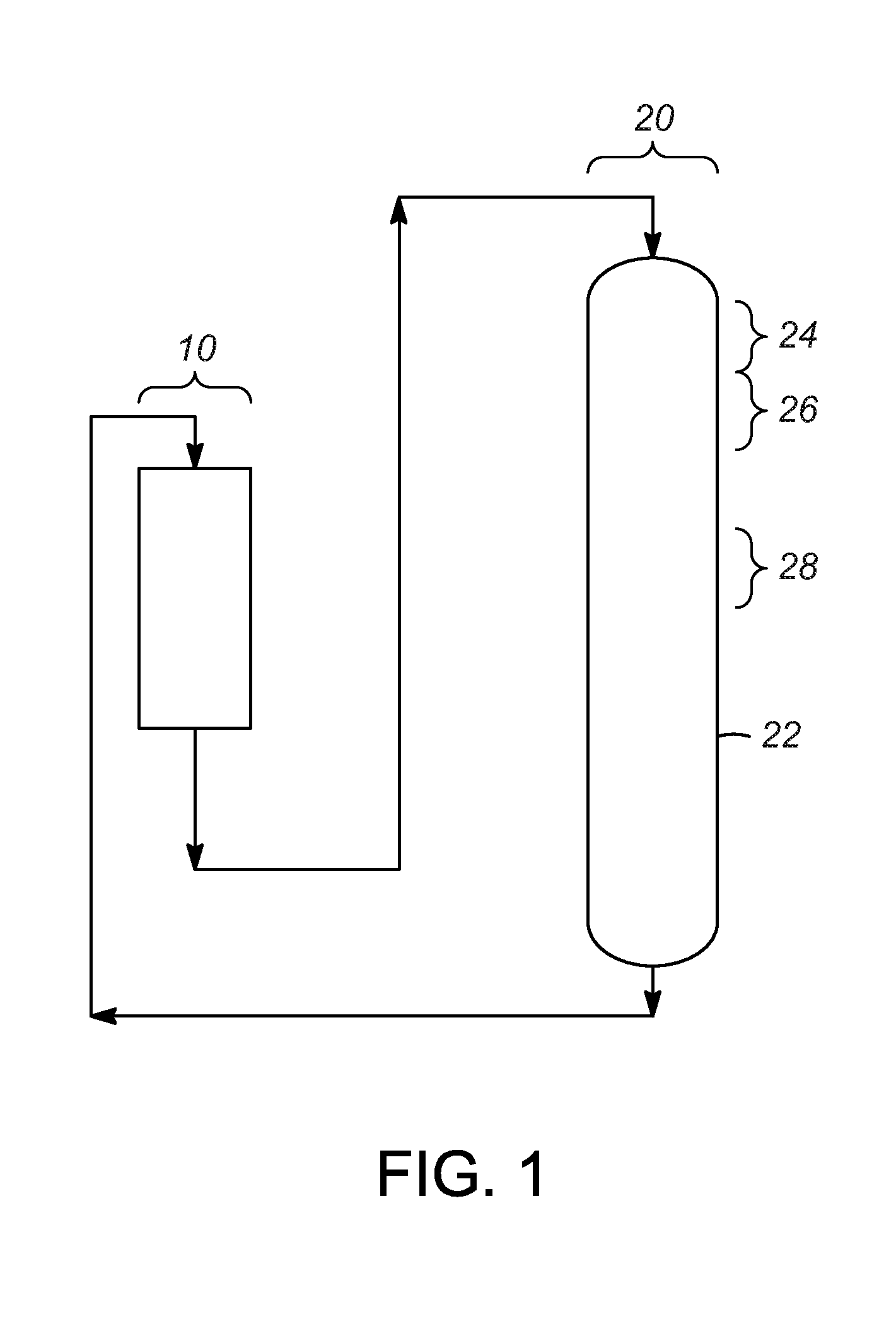Processes for the continuous regeneration of a catalyst
- Summary
- Abstract
- Description
- Claims
- Application Information
AI Technical Summary
Benefits of technology
Problems solved by technology
Method used
Image
Examples
Embodiment Construction
[0036]One or more processes have been developed for the regeneration of a catalyst used in a catalytic reforming reaction.
[0037]A catalytic reforming reaction is normally effected in the presence of catalyst particles comprised of one or more Group VIII noble metals (e.g., platinum, iridium, rhodium, palladium) and a halogen combined with a porous carrier, such as a refractory inorganic oxide. The halogen is normally chloride. Alumina is a commonly used carrier. The preferred alumina materials are known as the gamma, eta and theta alumina with gamma and eta alumina giving the best results. An important property related to the performance of the catalyst is the surface area of the carrier.
[0038]Catalyst particles are usually cylindrical or spheroidal, having a diameter of from about 1 / 16th to about ⅛th inch (1.5-3.1 mm), though they may be as large as ¼th inch (6.35 mm). When cylindrical, the catalyst particles have a length of from about ⅛th to about ¼th inch (3.1-6.35 mm). In a par...
PUM
| Property | Measurement | Unit |
|---|---|---|
| Temperature | aaaaa | aaaaa |
| Temperature | aaaaa | aaaaa |
| Temperature | aaaaa | aaaaa |
Abstract
Description
Claims
Application Information
 Login to View More
Login to View More - R&D Engineer
- R&D Manager
- IP Professional
- Industry Leading Data Capabilities
- Powerful AI technology
- Patent DNA Extraction
Browse by: Latest US Patents, China's latest patents, Technical Efficacy Thesaurus, Application Domain, Technology Topic, Popular Technical Reports.
© 2024 PatSnap. All rights reserved.Legal|Privacy policy|Modern Slavery Act Transparency Statement|Sitemap|About US| Contact US: help@patsnap.com










